This weekend I wanted to try to be a little bit more adventurous with the barbecue. I wanted to take on cooking stuff that would take lower temperatures and require longer time. My first experiment with something that required a longer cook was the chicken last weekend. That turned out well and I felt that I was up for trying something a little more challenging.
I got a nice bit of lamb shoulder from my local butcher. I wanted a big enough piece for it to be worth the effort, but not gigantic, as that would be a waste. Like sure I’d eat it, but I really didn’t want to be stuck eating lamb for the next week. That would be kind of boring. I also ended up with some pork, pork loin on the bone.
So doing a long and slow cook was an interesting challenge. I knew I couldn’t just throw a load of charcoal into the grill and walk away. I needed to set it up so that it would burn more slowly and try to keep the temperature a bit lower than what you’d use when doing a steak or similar.
I’d been watching quite a few videos and reading up on the various techniques over the past couple of weeks. The “snake method” seemed to be a good way of getting a slow and long cook out of the charcoal. Unfortunately I couldn’t find any examples of how to setup a long slow cook using lump charcoal, so had to resort to using briquettes.
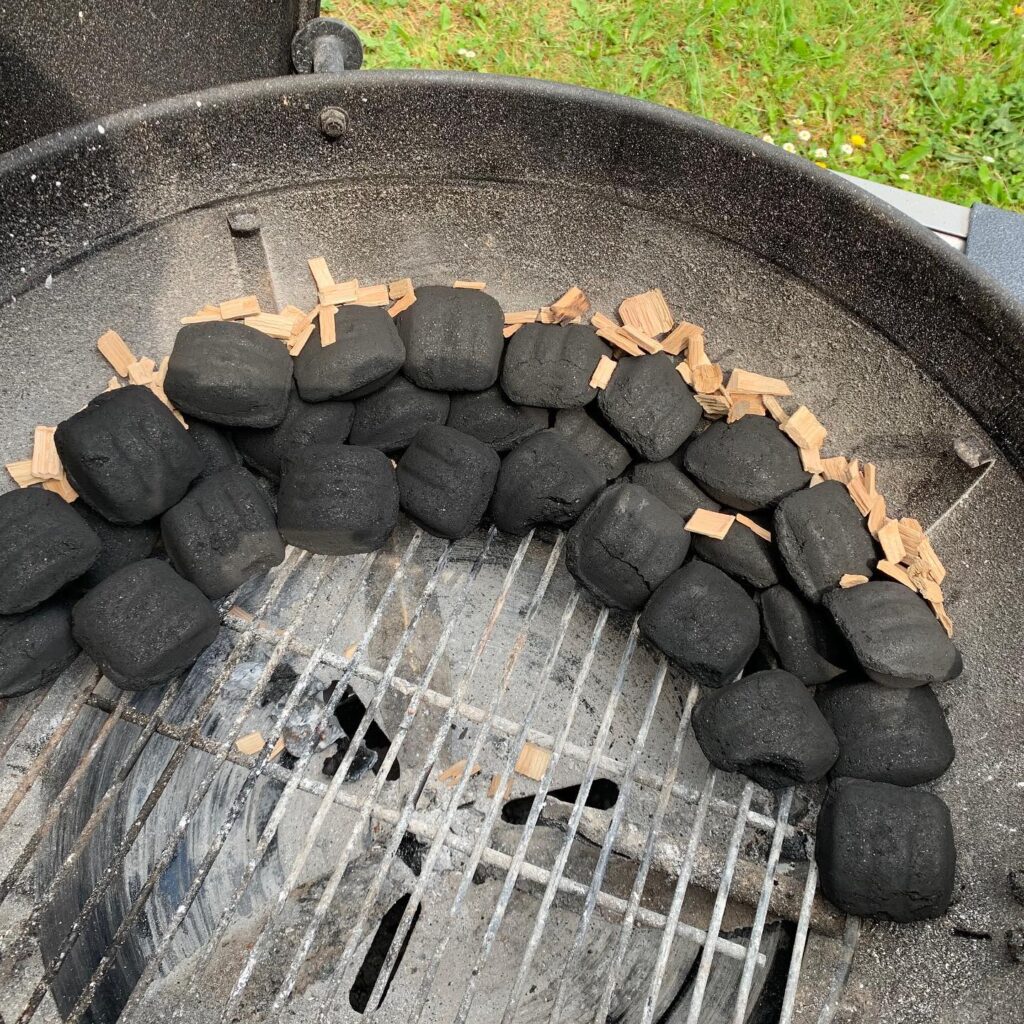
The idea behind this method is that you build a little “snake” with charcoal briquettes and then place hot coals at one end to start it off. The theory being that as the coals burn they’ll gently ignite the ones next to them and this will ensure that the barbecue keeps going but without the temperature rising too much.
It’s also a more economical way of using charcoal, as you’re only burning a few at any given time.
After about 4 hours of cooking my “snake” had got smaller, but it could easily have kept going for another 4 or 5 more hours.
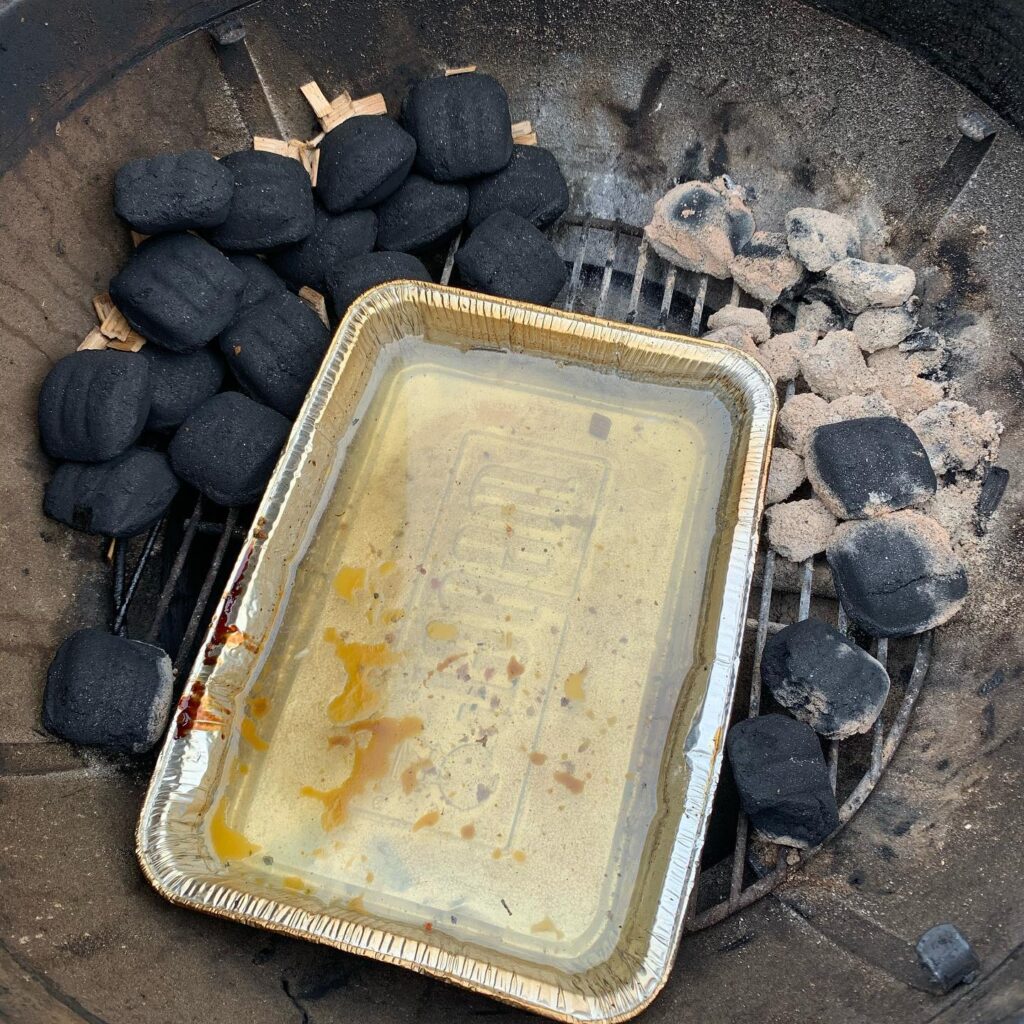
Setting it up wasn’t that hard to do, but getting the temperature of the grill to the right level was tricky. The weber kettle grills have vents in the lid as well as underneath. Adjusting them controls the flow of air into the kettle. Also you can control the flow of heat within the kettle by how you position the lid vents in relation to the heat source. It is a little complicated and I didn’t get it right. I mean sure, I managed to cook two different meats yesterday evening and this evening and I was very happy with the results. but I wasn’t that impressed with the temperature graphs. The meater has a nice function where it’ll track the temperature and graph it for you. I definitely need a temperature probe that is accurate for the grate itself if I want to keep track of this kind of cook in the future. (I ordered one the other day which was on special so will hopefully get it in the next few days)
So here’s what my graphs looked like:
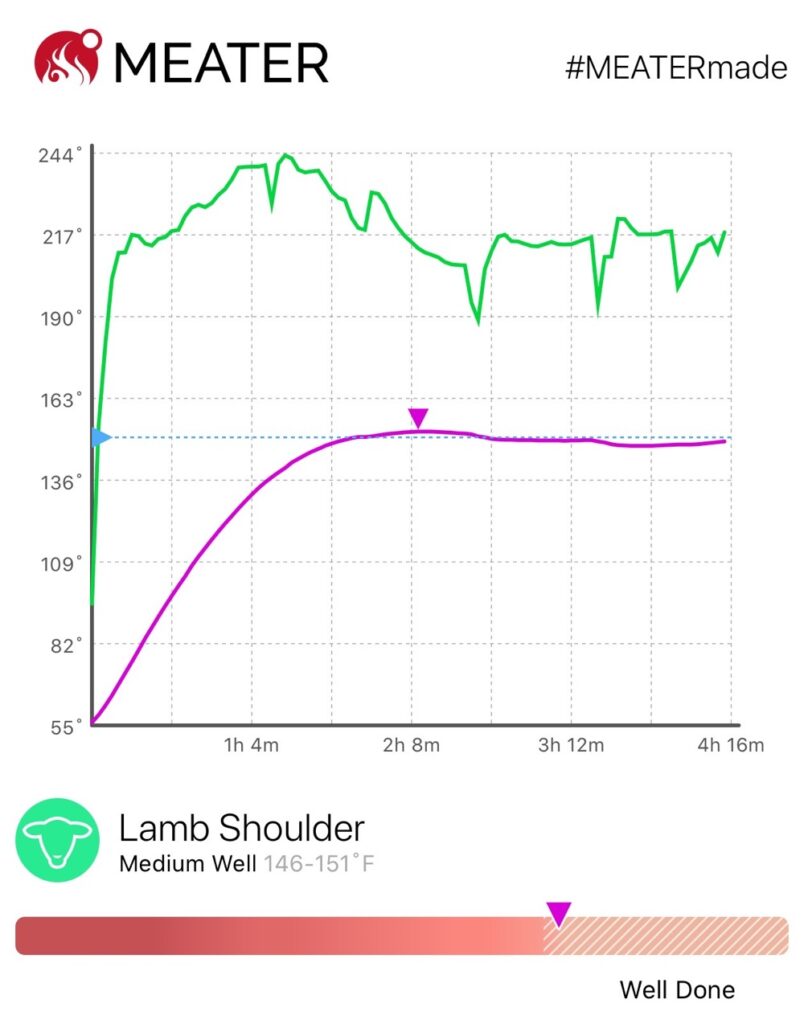
More done than I would normally do lamb but it was still delicious
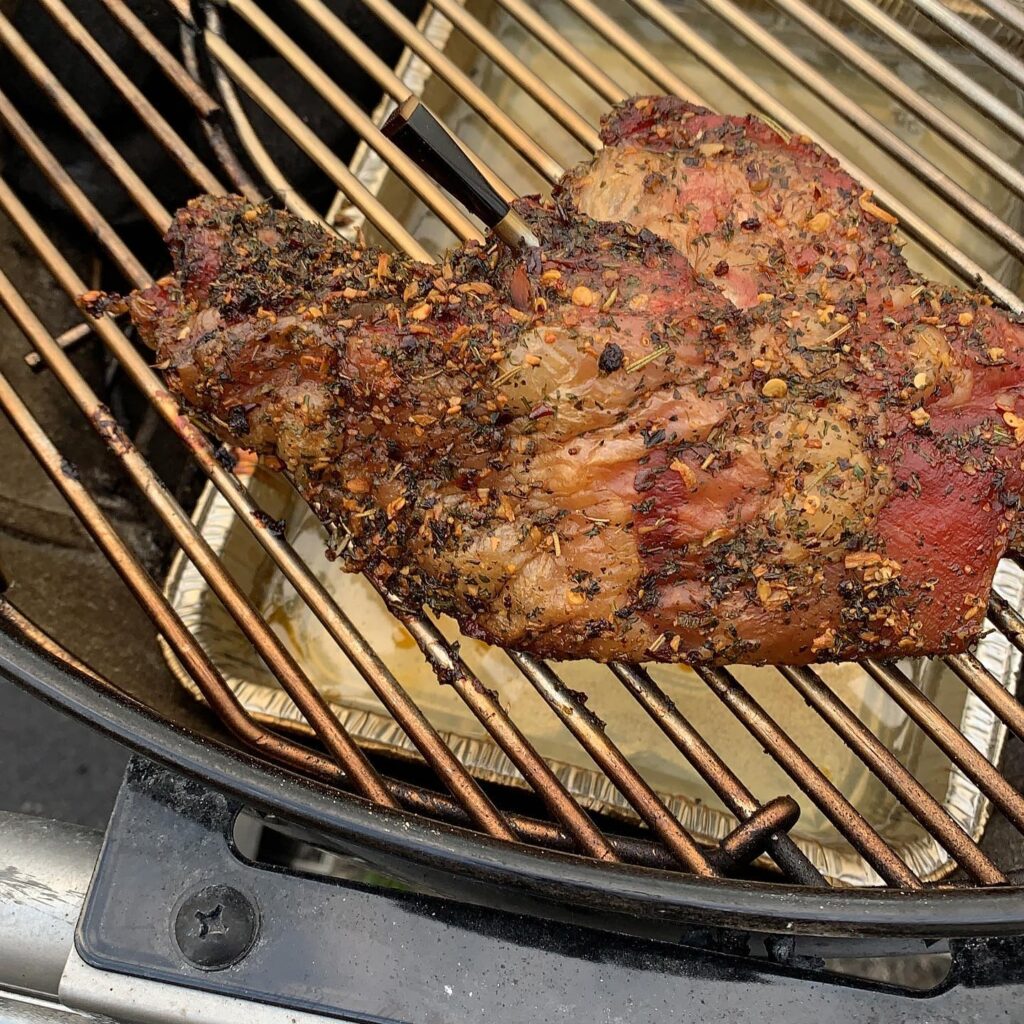

This afternoon and evening it was pork loin on the bone.
I think I got the temperatures a bit better under control though still far from perfect
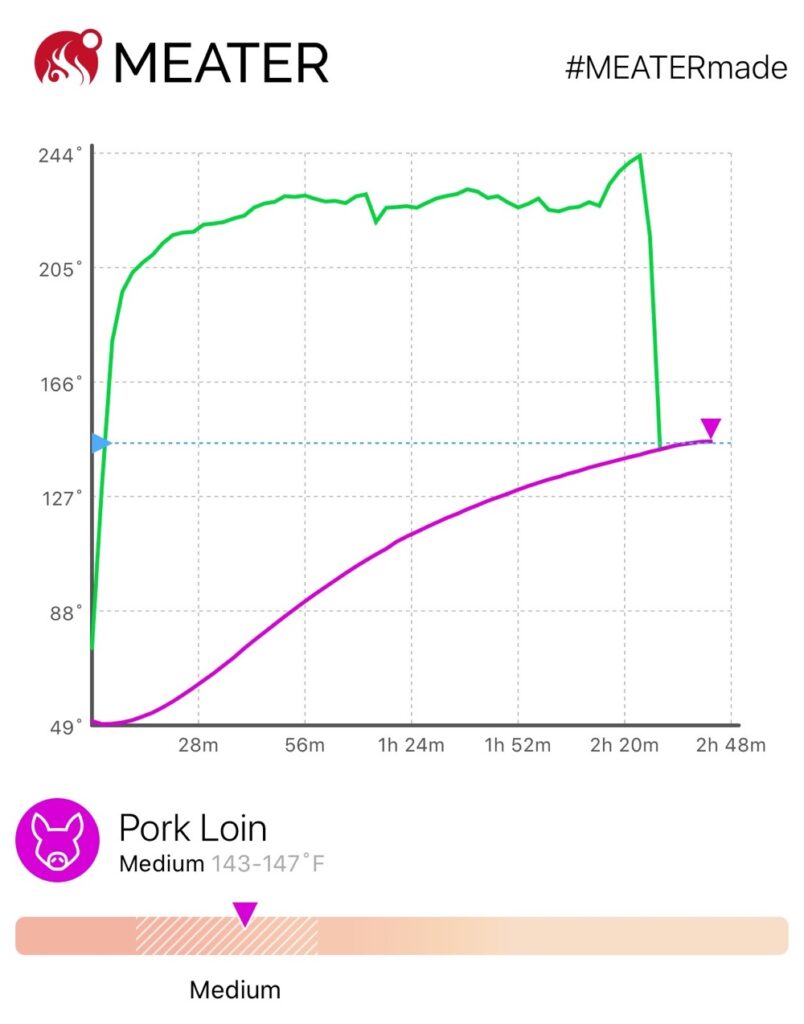
The big drop in temperature was when the meat was resting in the kitchen after being removed from the grill.
I don’t normally use Fahrenheit, but as the only good guides I could find on temperatures and cooking times etc., for barbecue were on American sites like this I opted to switch the meater over to Fahrenheit as it made it a little easier.
So how did it turn out?
Well I was happy with the result, that’s for sure!
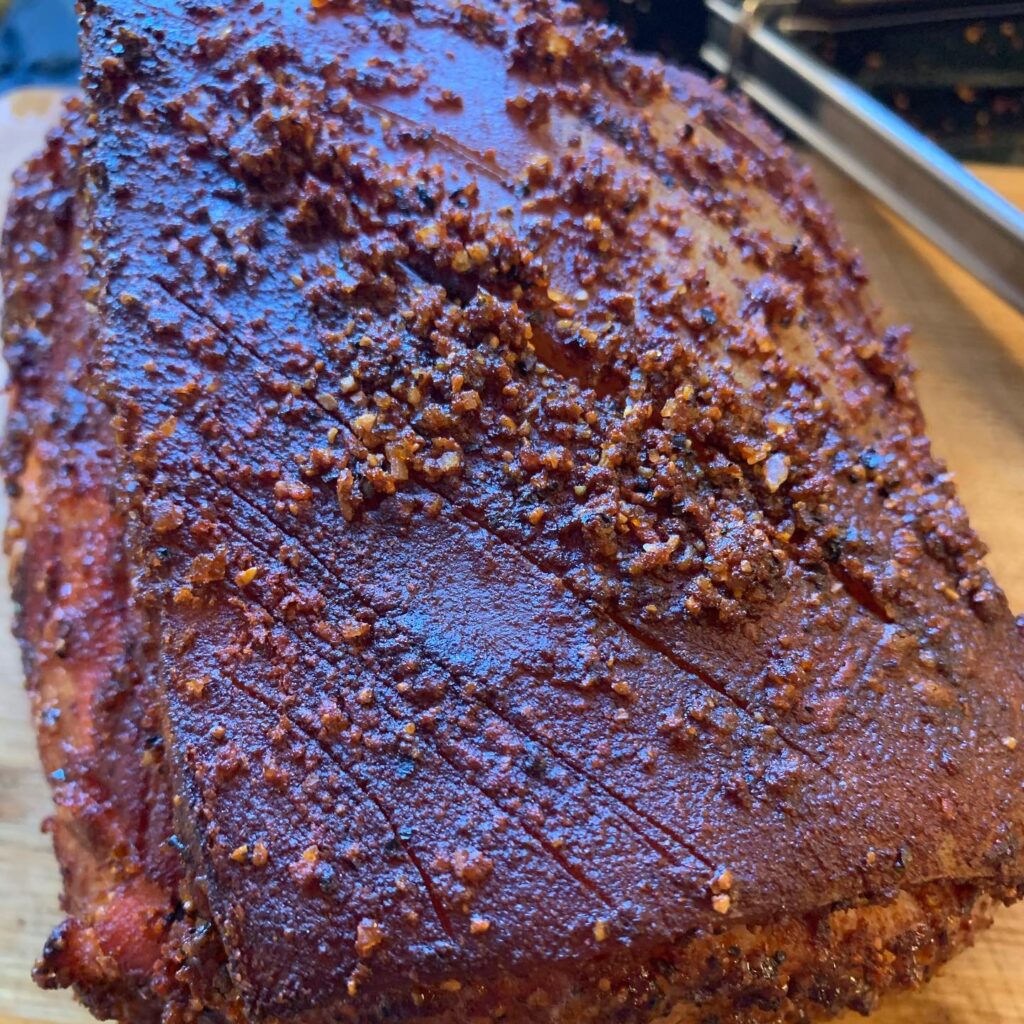
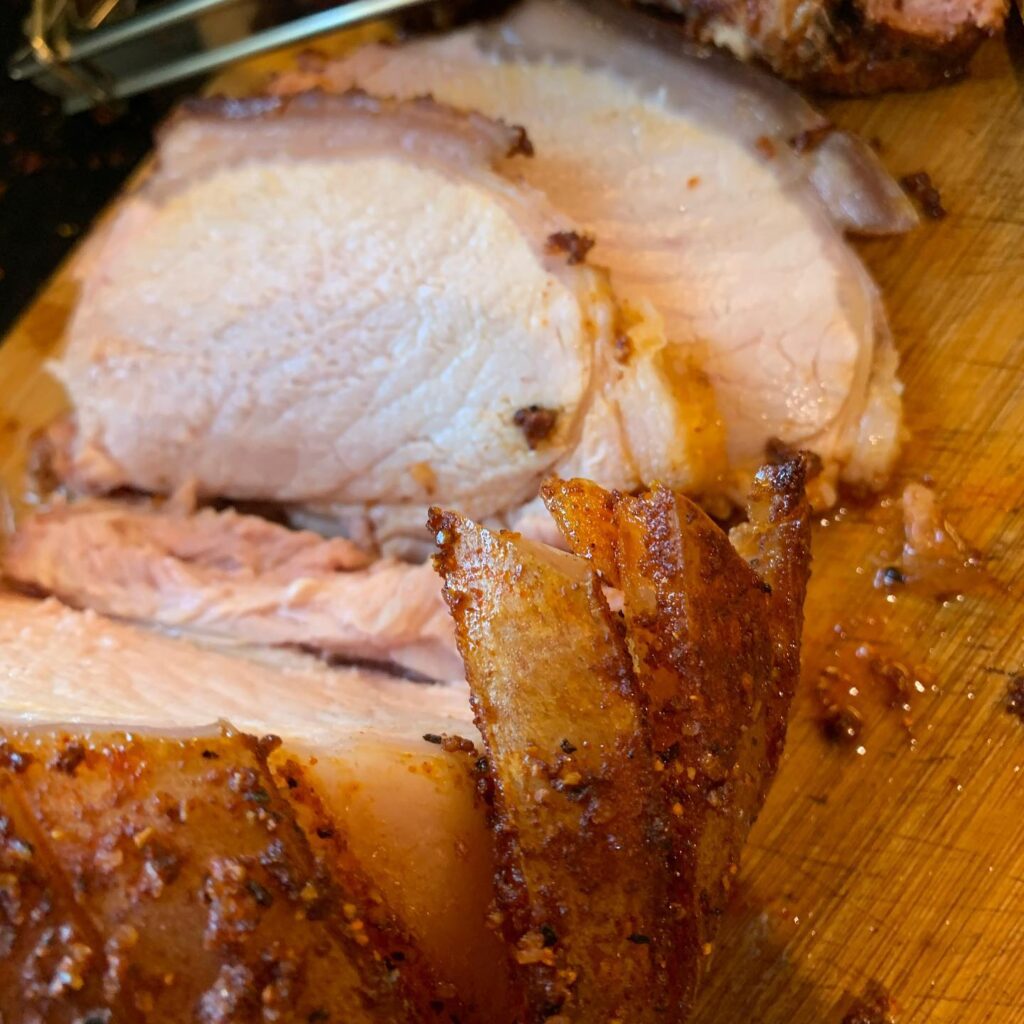
I’ll be having pork for lunch for the next couple of days – with a bit of nice salad!
For the lamb and pork I used rubs I got from Bulldog Barbecue. They stock their own rubs, as well as ones from Smokey Joe’s.
I’m really enjoying experimenting, but I’ve no idea what I’ll try next!


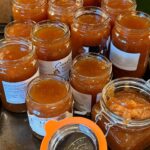

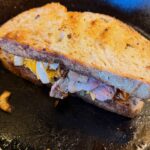


I have a friend who cooks his Xmas turkey on the BBQ every year. I’m not brave enough to try that but he inspired me to do whole chickens. Regular feature of my BBQ now. Like the snake method – not seen that before but will try it soon. Incidentally, good briquettes seem to be better than lump wood charcoal – longer burn and more even temperature.
100% agree about the fuel quality. I picked up some lump charcoal in a local shop and it was a disaster. It literally had branches of tree in it!
However the good quality lump charcoal is excellent, but I also tend to agree that the fuel choice impacts how you can cook. Lump seems to burn faster and hotter, while briquettes with their consistent size and shape give you a bit more control.
Thanks for your comment
Michele